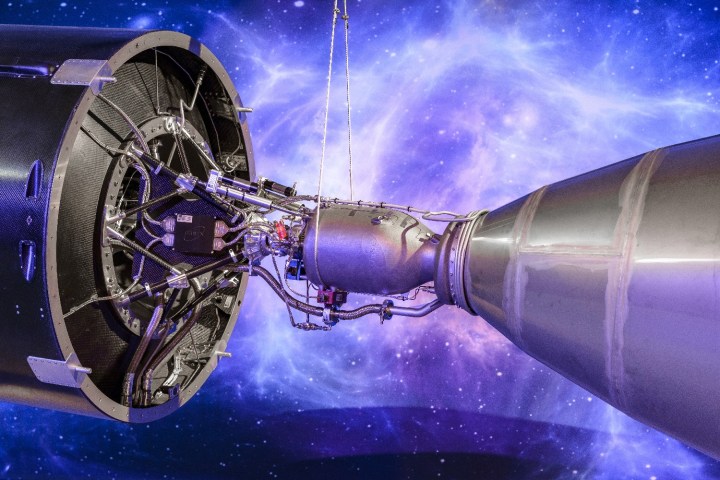
Between SpaceX’s reusable, vertically landing rockets, trips to the far side of the moon, and some halfway serious talk about asteroid mining and Mars colonies, we’re living in an exciting age for boundary-pushing. high-tech space travel. The latest illustration of this? A U.K. startup, Orbex, which recently debuted the world’s largest 3D-printed rocket engine. Produced in one single piece of high spec metal alloy, without joins, the rocket is up to 30 percent lighter and 20 percent more efficient than other similarly sized rockets, as well as being better able to withstand high temperature and pressure.
“3D printing, or additive manufacturing, has come on in leaps and bounds over the past few years — in many ways making this a superior form of parts manufacturing than traditional methods,” Chris Larmour, CEO of Orbex, told Digital Trends. “It is certainly much, much faster, meaning that we could create a new rocket engine in three to four days, which is a huge advantage as we scale rocket development over time. The other big leap forward with this rocket engine is that it is the first commercial rocket engine designed to work with bio-propane, which is a clean-burning and renewable fuel.”

The 3D-printed rocket was produced with input from several partners, included 3D-printing company SLM Solutions and bottled butane and propane provide Calor. The finished rocket, complete with 3D-0printed rocket engine, will stand around 56 feet. That’s only around one quarter the size of a SpaceX Falcon 9 rocket, but more than capable of carrying out its mission.
“Prime is a two-stage rocket,” Larmour said. “The first stage of the rocket hasn’t been unveiled yet and will reside at the back of the stage 2 rocket, which was just revealed to the public. The objective of the first stage is to launch the rocket off the ground, and the second stage launches the rocket — and its payload of satellites — into Earth’s orbit. The small satellites that will be deployed will have a range of uses such as earth observation and communications applications, and are often deployed in constellations.”
Orbex is planning for its first launch to take place in Scotland in 2021. It has recruited Switzerland’s Astrocast SA as a customer to launch 10 nanosatellites in 2023 as part of its global Internet of Things (IoT) network.
Editors' Recommendations
- Nvidia turns simple text prompts into game-ready 3D models
- AMD is bringing 3D V-Cache back to Ryzen 7000 — but there’s a twist
- AMD’s revolutionary 3D V-Cache chip could launch very soon
- Fighting football injuries with 3D-printed, hyper-personalized pads
- AMD’s 3D-stacked Ryzen 7 5800X3D is ‘world’s fastest gaming processor’


